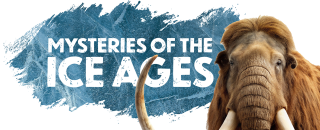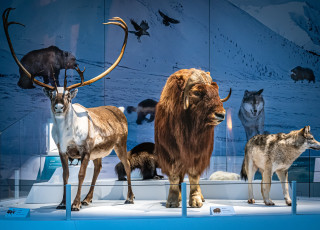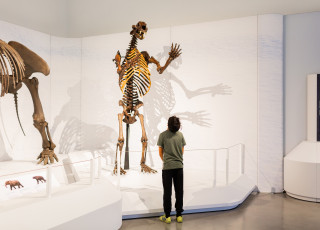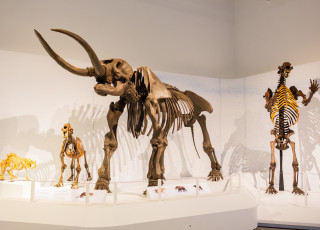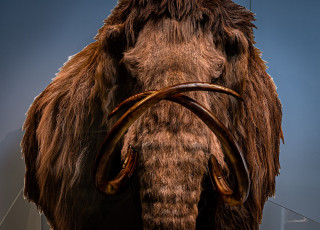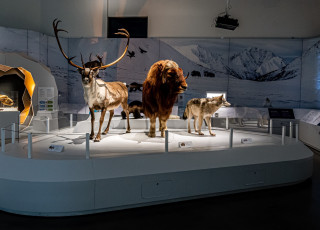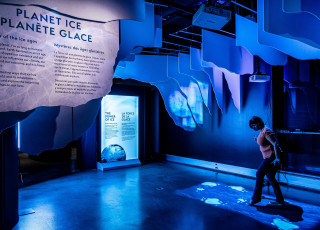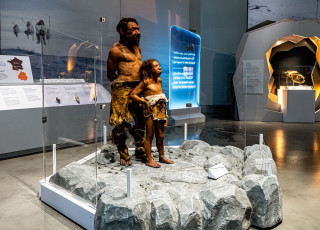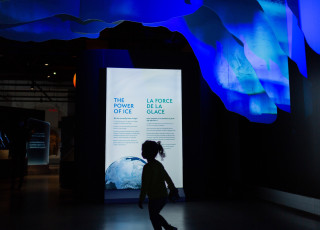More Mammoths Arrive in Salt Lake City with Mysteries of the Ice Ages
A New Special Exhibition Opens at NHMU on June 7
Salt Lake City, June 7, 2025 – Apparently the Ice Age is snowballing in Salt Lake City with the arrival of more mammoths! Just after the renaming of the Utah Mammoth hockey team, the Natural History Museum of Utah has revealed its newest special exhibition, Mysteries of the Ice Ages, which will open June 7, 2025. The exhibit explores 18,000 years of Earth’s dramatic Ice Age history, from the hardy animals that roamed frozen landscapes—including massive mammoths—to how ice has shaped our planet over thousands of years.
“From towering Ice Age mammals to the ingenious tools of Arctic peoples, this exhibition is a powerful reminder of how life endures—and evolves—in response to a changing climate,” said Tim Lee, director of exhibits at NHMU. “And the arrival of the exhibit couldn’t be better timed with piquing interest in mammoths, Utah’s new NHL team mascot. Mysteries of the Ice Ages highlights Utah’s ice ages and climate stories, connecting them to unique objects from our collections and themes explored in our permanent exhibitions.”

Developed by the Canadian Museum of Nature (CMN), the traveling exhibition presents 120 specimens, artifacts, models, interactives, and multimedia that uncover mysteries once frozen in ice. Visitors will come face to face with a mastodon, giant beaver, short-faced bear, and saber-toothed cat. Learn how Neanderthals adapted to live in a cold environment and investigate how species like muskoxen, caribou, and wolves successfully adapted to survive and thrive.
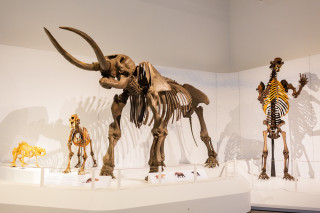
Also on display will be authentic tools and other artifacts that were used by the Tuniit (Dorset) and Thule-Inuit peoples in Canada’s Arctic. Most of these archeological treasures are over more than one thousand years old. They are curated at the CMN on behalf of the Government of Nunavut.
“Ice ages are more than just ancient history—they’re chapters in Earth’s ongoing story, said Tyler Faith, Ph.D., chief curator at NHMU. “Extreme cold has reshaped continents, driven evolutionary change, and forced plants and animals - including humans - to adapt or perish. This exhibition brings that epic narrative to life, showing how the legacy of ice continues to influence our world today.”
In addition to the impressive displays of Ice Age animals and artifacts, immersive exhibit components featuring artistry and animation will offer guests “magical moments” that place them in snow-filled landscapes.
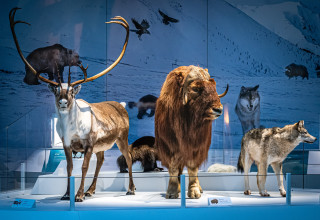
Martin Lipman
“As Canada’s national natural history museum, we’re proud to see this traveling exhibition arrive in Utah to share the story of how ice and cold have shaped the environment we know today,” says Danika Goosney, Ph.D., President and CEO of the Canadian Museum of Nature. “We drew from our extensive national collections and scientific expertise to tell this timely story in collaboration with scientific partners and we are grateful for the support of the exhibition’s presenting partner, Polar Knowledge Canada.”
CMN’s content development for Mysteries of the Ice Ages relied on partnerships with the Royal Alberta Museum, Yukon Beringia Interpretive Centre, the Canadian Museum of History and the Canadian Broadcasting Corporation. Experts who provided scientific information and advice included Dr. Grant Zazula, paleontologist with the Government of Yukon and CMN Research Associate; Prof. Chris Stringer with the Natural History Museum, London; Prof. Ian Fairchild, University of Birmingham, and Dr. Jill Cook with the British Museum.
Mysteries of the Ice Ages is open at NHMU from June 7, 2025, until January 4, 2026 as bilingual exhibition offered in both English and Spanish. The exhibition is included with museum admission, which is free for Museum Members. Visit nhmu.utah.edu/IceAges to learn more and prebook tickets.
Mysteries of the Ice Ages would not be possible without the support of our generous sponsors and partners. We are especially grateful to our Presenting Sponsor, The I.J. and Jeanné Wagner Charitable Foundation; our Major Sponsors, The Clark and Nancy Giles Special Exhibition Endowed Fund and My Good Fund; our Exhibit Sponsor, The Cultural Vision 30 Year Endowment Fund; our Community Sponsors The DiFiore Family Foundation and the Marriner S. Eccles Foundation; and our supporting partner Dressler Detours. Mysteries of the Ice Ages is developed by the Canadian Museum of Nature in Ottawa, Canada, with support from tour partner Polar Knowledge Canada.
About the Natural History Museum of Utah
The Natural History Museum of Utah is one of the leading scientific research and cultural institutions in the country. Established in 1963, the museum’s 10 permanent exhibitions are anchored by its state-of-the-art collections and research facilities containing approximately 2 million objects. These collections are used in studies on geological, biological, and cultural diversity, and the history of living systems and human cultures within the Utah region. The museum hosts approximately 300,000 general visitors a year and provides one of the most spectacular private event settings in the Salt Lake City area. NHMU also broadens the reach of its mission through a variety of science-based outreach programs to communities and schools throughout Utah, reaching every school district in the state every other year.
About the Canadian Museum of Nature
The Canadian Museum of Nature is Canada's national museum of natural history and natural sciences. The museum provides evidence-based insights, inspiring experiences and meaningful engagement with nature's past, present and future. It achieves this through scientific research focused on biological and geological diversity, a scientific collection of more than 15 million specimens, education programs and workshops, signature exhibitions, and a dynamic web site, nature.ca.
Interview Opportunities
Tim Lee, director of exhibits, NHMU
Tim Lee is Director of Exhibits at the Natural History Museum of Utah; whose mission is to illuminate the natural world and the humans within it. Lee's design process incorporates elements of design thinking and visitor studies to generate exhibits that engage visitors in surprising and meaningful ways.
Tyler Faith, Ph.D, chief curator, NHMU
Tyler Faith is a paleoecologist who studies relationships between fossil mammals, environmental change, and human-environment interactions, with a focus on the time and place relevant to understanding the causes and consequences of human evolution: Africa over the past 7,000,000 years. Faith’s research overlaps with anthropology, paleobiology, and the geosciences, and he has produced impactful work across these core disciplines and more broadly. He has published over 100 peer-reviewed articles in top scientific journals, including Science, Nature, and PNAS.
